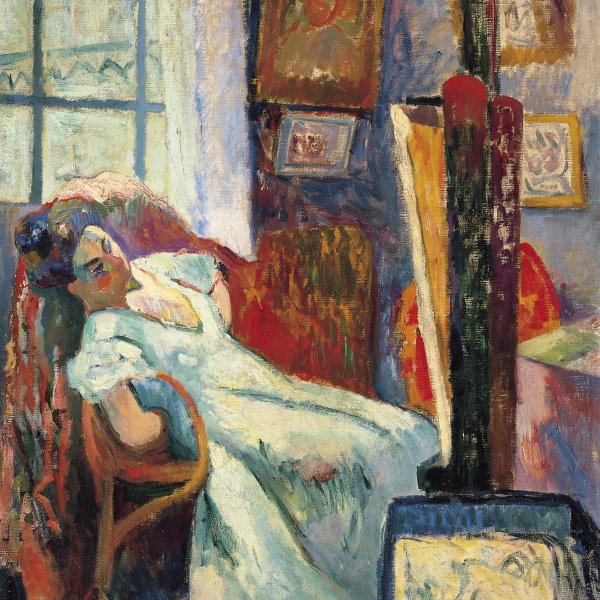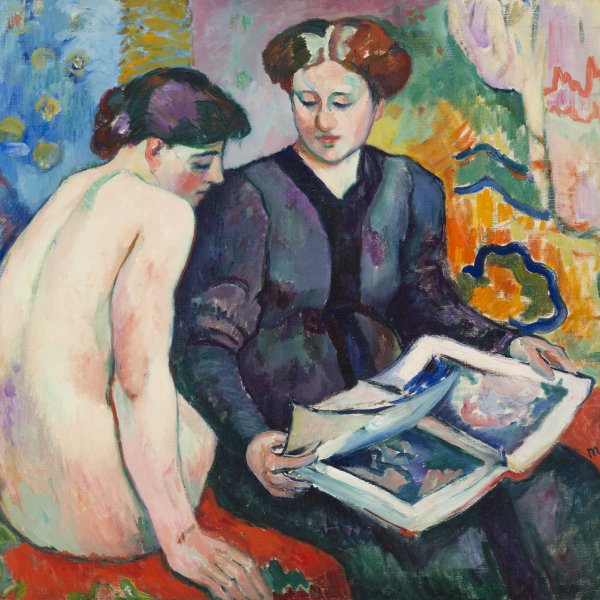Henri Manguin
París, 1874-Saint-Tropez, 1949
In 1890, Manguin abandoned his studies at the Lycée Colbert in order to devote himself exclusively to painting. In 1894 he enrolled at the École des Beaux-Arts, in Gustave Moreau's workshop. There he met Henri Matisse and Albert Marquet, becoming close friends with both. In 1899 he married Jeanne Marie Carette, the model of many of his paintings for over thirty years. Together, they moved to a house in Rue Boursault. In its garden, Manguin built a large studio with assembled panels, which was frequented, among others, by Matisse, Marquet, Derain, Camoin and Puy, thus becoming the place where Fauvism took shape.
In September 1904, invited by Paul Signac, Manguin visited Saint-Tropez, where he was captivated by the southern light. Manguin, in spite of Signac's example, did not take up pointillism, but continued in his search for a painting both harmonic in its use of colour and balanced. Manguin visited in Saint-Tropez again in the summer of 1905, and there he painted many works on the subject of 14 July, some of them without the development of perspective. In October, he presented five oil paintings in the famous cage aux fauves at the Salon d'Automne. Amboise Vollard bought one hundred and fifty of his paintings in 1906.
In the following years, he befriended Henri-Edmond Cross and Félix Vallotton, and the latter put him in touch with important Swiss collectors.
Manguin remained faithful to Fauvism during the rest of his life, painting landscapes and still lifes of great balance and harmony. From the 1920s onward, he alternated his life in Paris with long periods in Saint-Tropez, Marseille, Neuilly-sur-Seine, etc. After a short illness, he died in Saint-Tropez on 25 September 1949, at the age of 75.
Juan Á. López-Manzanares
In September 1904, invited by Paul Signac, Manguin visited Saint-Tropez, where he was captivated by the southern light. Manguin, in spite of Signac's example, did not take up pointillism, but continued in his search for a painting both harmonic in its use of colour and balanced. Manguin visited in Saint-Tropez again in the summer of 1905, and there he painted many works on the subject of 14 July, some of them without the development of perspective. In October, he presented five oil paintings in the famous cage aux fauves at the Salon d'Automne. Amboise Vollard bought one hundred and fifty of his paintings in 1906.
In the following years, he befriended Henri-Edmond Cross and Félix Vallotton, and the latter put him in touch with important Swiss collectors.
Manguin remained faithful to Fauvism during the rest of his life, painting landscapes and still lifes of great balance and harmony. From the 1920s onward, he alternated his life in Paris with long periods in Saint-Tropez, Marseille, Neuilly-sur-Seine, etc. After a short illness, he died in Saint-Tropez on 25 September 1949, at the age of 75.
Juan Á. López-Manzanares





